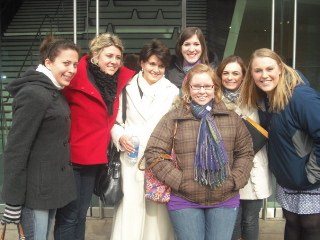Science Agenda | Mind & Brain
 See Inside
See Inside Hearing the Music, Honing the Mind
Music produces profound and lasting changes in the brain. Schools should add classes, not cut them
October 26, 2010 10
 Image: Wendy McMurdo
Image: Wendy McMurdo
Nearly 20 years ago a small study advanced the notion that listening to Mozart’s Sonata for Two Pianos in D Major could boost mental functioning. It was not long before trademarked “Mozart effect” products appealed to neurotic parents aiming to put toddlers on the fast track to the Ivy League. Georgia’s governor even proposed giving every newborn there a classical CD or cassette.
The evidence for Mozart therapy turned out to be flimsy, perhaps nonexistent, although the original study never claimed anything more than a temporary and limited effect. In recent years, however, neuroscientists have examined the benefits of a concerted effort to study and practice music, as opposed to playing a Mozart CD or a computer-based “brain fitness” game once in a while. Advanced monitoring techniques have enabled scientists to see what happens inside your head when you listen to your mother and actually practice the violin for an hour every afternoon. And they have found that music lessons can produce profound and lasting changes that enhance the general ability to learn. These results should disabuse public officials of the idea that music classes are a mere frill, ripe for discarding in the budget crises that constantly beset public schools.
Studies have shown that assiduous instrument training from an early age can help the brain to process sounds better, making it easier to stay focused when absorbing other subjects, from literature to tensor calculus. The musically adept are better able to concentrate on a biology lesson despite the racket in the classroom or, a few years later, to finish a call with a client when a colleague in the next cubicle starts screaming at an underling. They can attend to several things at once in the mental scratch pad called working memory, an essential skill in this era of multitasking.
Discerning subtleties in pitch and timing can also help children or adults in learning a new language. The current craze for high school Mandarin classes furnishes an ideal example. The difference between m¯a (a high, level tone) and mà (falling tone) represents the difference between “mother” and “scold.” Musicians, studies show, are better than nonmusicians at picking out easily when your m¯a is màing you to practice. These skills may also help the learning disabled improve speech comprehension.
Sadly, fewer schools are giving students an opportunity to learn an instrument. In Nature Reviews Neuroscience this summer, Nina Kraus of Northwestern University and Bharath Chandrasekaran of the University of Texas at Austin, who research how music affects the brain, point to a disturbing trend of a decline of music education as part of the standard curriculum. A report by the advocacy organization Music for All Foundation found that from 1999 to 2004 the number of students taking music programs in California public schools dropped by 50 percent.
Research of our brains on music leads to the conclusion that music education needs to be preserved—and revamped, as needed, when further insights demonstrate, say, how the concentration mustered to play the clarinet or the oboe can help a problem student focus better in math class. The main reason for playing an instrument, of course, will always be the sheer joy of blowing a horn or banging out chords. But we should also be working to incorporate into the curriculum our new knowledge of music’s beneficial effect on the developing brain. Sustained involvement with an instrument from an early age is an achievable goal even with tight budgets. Music is not just an “extra.”









